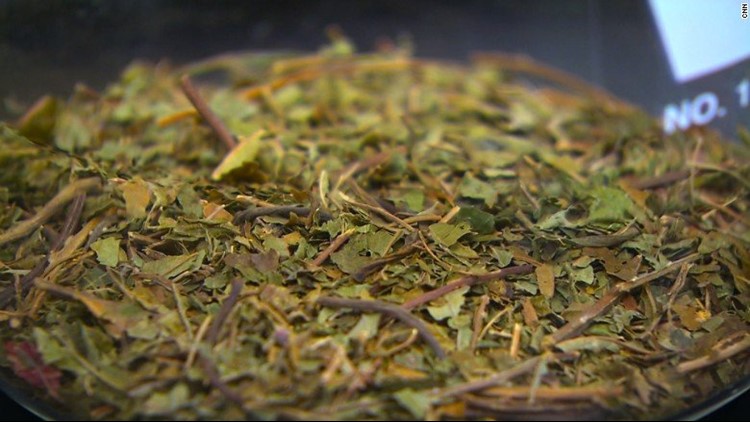(CNN) — The Food and Drug Administration dealt another blow Tuesday to supporters of kratom, warning about “deadly risks” associated with the botanical supplement often used to treat pain, anxiety and depression. Kratom also has opioid-like effects — at low doses, it acts like a stimulant; at higher doses, it sedates, dulling pain — which has also made it popular as an over-the-counter remedy for opioid withdrawal.
“It’s very troubling to the FDA that patients believe they can use kratom to treat opioid withdrawal symptoms,” FDA Commissioner Scott Gottlieb said in a statement. “There is no reliable evidence to support the use of kratom as a treatment for opioid use disorder.”
Instead, he said, the FDA is concerned that the use of kratom could actually “expand the opioid epidemic.”
“We’ve learned a tragic lesson from the opioid crisis: that we must pay early attention to the potential for new products to cause addiction and we must take strong, decisive measures to intervene,” Gottlieb said.
Gottlieb pointed to reports of 36 deaths associated with kratom, as well as a tenfold increase in calls to US poison control centers about the substance between 2010 and 2015. Gottlieb said kratom has been associated with “serious side effects like seizures, liver damage and withdrawal symptoms.” In addition, he said, kratom can be laced with other pain medications, like hydrocodone, contributing to opioid addiction.
Used for centuries
Native to Southeast Asia, the kratom tree’s leaves have been used for centuries as an herbal drug by laborers and farmers. Today, kratom leaves are ground into pills and powders, and sold as a dietary supplement. It can be found in head shops and online. It’s even made into drinks in some bars.
By itself, one of the main ingredients in kratom is several times more addictive than morphine, according to Dr. Ed Boyer, a professor of emergency medicine at the University of Massachusetts Medical School, who has studied the plant. It has this effect because its active ingredients, mitragynine and 7-hydroxymitragynine, bind to the opioid receptors in our body, Boyer said, but unlike opioid drugs such as hydrocodone or heroin, it doesn’t appear to slow breathing.
In 2014, the FDA issued an alert that allowed US officials to detain kratom without a physical examination. Between February 2014 and July 2016,the DEA said, nearly 247,000 pounds of kratom were seized.
In August 2016, the Drug Enforcement Agency moved to make kratom a Schedule I drug, a substance that has “no currently accepted medical use and a high potential for abuse.” After a public outcry, including letters from members of the House of Representatives and the Senate, the DEA withdrew its intent make it Schedule I. Instead, it opened a public comment period to react to possible scheduling, which closed in December 2016. Since that time, the DEA has taken no action.
A call to science
In his statement, Gottlieb addressed those concerns, saying that although the FDA remains open to the potential medicinal uses of kratom, “those uses must be backed by sound-science and weighed appropriately against the potential for abuse” and thoroughly evaluated by the DEA and the FDA.
“To those who believe in the proposed medicinal uses of kratom,” he wrote, “I encourage you to conduct the research that will help us better understand kratom’s risk and benefit profile, so that well studied and potentially beneficial products can be considered.”
At the request of the DEA, Gottlieb said, his agency has conducted a comprehensive scientific and medical evaluation of two compounds found in kratom and continues to actively prevent shipments from entering the country, and destroy any that are seized.
“From the outset, the FDA must use its authority to protect the public from addictive substances like kratom,” Gottlieb wrote, “both as part of our commitment to stemming the opioid epidemic and preventing another from taking hold.”



